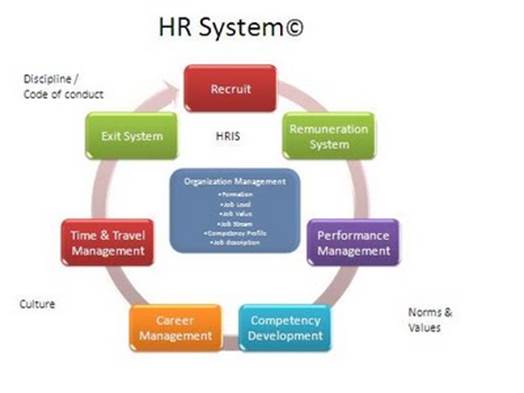Where we’re at & where we’re
headed
Years after the cloud computing hype
machine first revved its engine, there’s still some confusion and dissention
among interested parties as to what “cloud computing” exactly means. What there
isn’t much confusion or dissention about is that we are still in cloud
computing’s early days. Still, various surveys, research, and other data
suggest that cloud computing adoption rates have grown steadily in recent years
to impressive levels. Also impressive is the percentage of companies reportedly
planning to adopt cloud-based services in the future relative to the number of
companies indicating no such plans. So, just how far has cloud computing come
in the last five years or so? What does the future hold for cloud computing?
Read on.
Where we’re at
Amy Larsen DeCarlo, principal analyst,
security and data center services, for Current Analysis (www.currentanalysis.com), says
there’s a growing awareness of cloud computing and cloud services from the
executive level on down, though “we’ve sort of gone through the hype and the
backlash.”
“In some ways,” she says, “it’s still very
early days in terms of deployments, especially if you’re talking about
infrastructure as a service.” Work still remains in specifically pinpointing
what “constitutes a cloud,” she adds, as some services that aren’t really cloud
services have been rebadged as such.

There’s
a growing awareness of cloud computing and cloud services from the executive
level on down
In addition, complications still exist from
a technical standpoint concerning deployments and “the concept of moving into
an environment where you have the ability to move work-loads between and among
different clouds. Who will play a brokering role? Who has the capability to
ensure workloads are migrated efficiently, and if there’s an appropriate degree
of security and stability?”
Positively, businesses have done
considerable work in determining if on-demand computing or storage can fit into
their environments and in trying to devise enterprise-wide cloud strategies,
she says. The industry has made good progress, and “in some areas that progress
has been pretty extraordinary.” In other areas, though, there’s a long way to
go.
Between 2010 and 2011, Info-Tech Research
Group reported an increase in SaaS (software as a service), IaaS
(infrastructure as a service), and PaaS (platform as a service) adoption. A
2012 survey indicated a roughly 75% increase in companies that had deployed
some type of solution, according to John Sloan, lead research analyst with
Info-Tech Research Group (www.infotech.com).
That’s up from about a 16% increase in 2010 and 28% increase in 2011.
Approximately 40% of respondents were in the exploration phase, he says, and
less than 20% said they had no interest in the cloud at all.
Chris Wolf, Gartner (www.gartner.com) research vice president,
says numerous Gartner clients are using SaaS and IaaS offerings, and there’s
increased interest in PaaS. That said, “there are also many organizations
taking a wait-and-see approach,” he says. “Oftentimes, concerns over regulatory
compliance, security, and cost are factors that cause organizations to delay
cloud adoption decisions.” Still, he says, the cloud has made a significant
impact, touching nearly every organization regardless of whether it’s even
using public cloud resources. For example, Wolf says, “organizations are now
commonly bench-marked by their business units against providers such as
Amazon,” something that leads to greater pressure to improve efficiencies and
lower costs. As a result, “cloud computing is a win for the business,
regardless of their rate of adoption,” he says.
SaaS vs. IaaS

SaaS
has topped IaaS and PaaS in interest level due primarily to its longer legacy
Traditionally, Sloan says, SaaS has topped
IaaS and PaaS in interest level due primarily to its longer legacy. Between
2010 and 2012, however, IaaS drew much closer, he says, growing by 200% in
terms of deployment. IaaS has benefited recently from a growth of server
consolidation and virtualization inside enterprises and an increased interest
in hybrid cloud approaches that combine agile internal IT infrastructures with
moving some infrastructure to external service providers, he says. “The number
of IaaS providers has really sort of exploded,” Sloan says. He also attributes
numerous local and regional service providers virtualizing their
infrastructures and creating IaaS offerings as a factor.
Numerous organizations, says DeCarlo, have
used SaaS as a re-placement or adjunct to existing applications, including
messaging and collaboration. Wolf says SaaS is well-suited for commodity
business services that require little to no customization, such as HR systems
and CRM. IaaS, meanwhile, has proven a good option for startups, R&D, and
temporary projects that have a set timeframe and where long-term investments
don’t make sense. Retail organizations, for example, typically have busy
seasons for which they can leverage IaaS to run services and then scale back as
demand decreases, Wolf says.

Integrated
HR Systems
Sloan cites the cloud’s “agility and
elasticity” and “pay-as-you-go, metered aspect” as one of its most compelling
traits for businesses. Any business launching a new project, he says, faces the
initial hurdle of determining how much resources to buy and provision, and if
the project succeeds, how much more to buy. Conversely, if the project fails
there’s a question of what to do with the purchased capacity. “When you look at
[the project] from the cloud economics, those questions go away,” Sloan says.
Business-wise, “what’s attractive about the cloud is the getting up fast in
terms of capital cost,” he says.
Sloan advises organizations to consider
total costs over time. Typically, he says, when charting out the total
accumulative costs of an on-premise, non-cloud approach vs. a cloud approach,
costs start off quite a distance apart. “The cloud is almost zero at the start,
and the non-cloud will have a considerable capital investment. But over time,
those two lines start to con-verge,” he says.